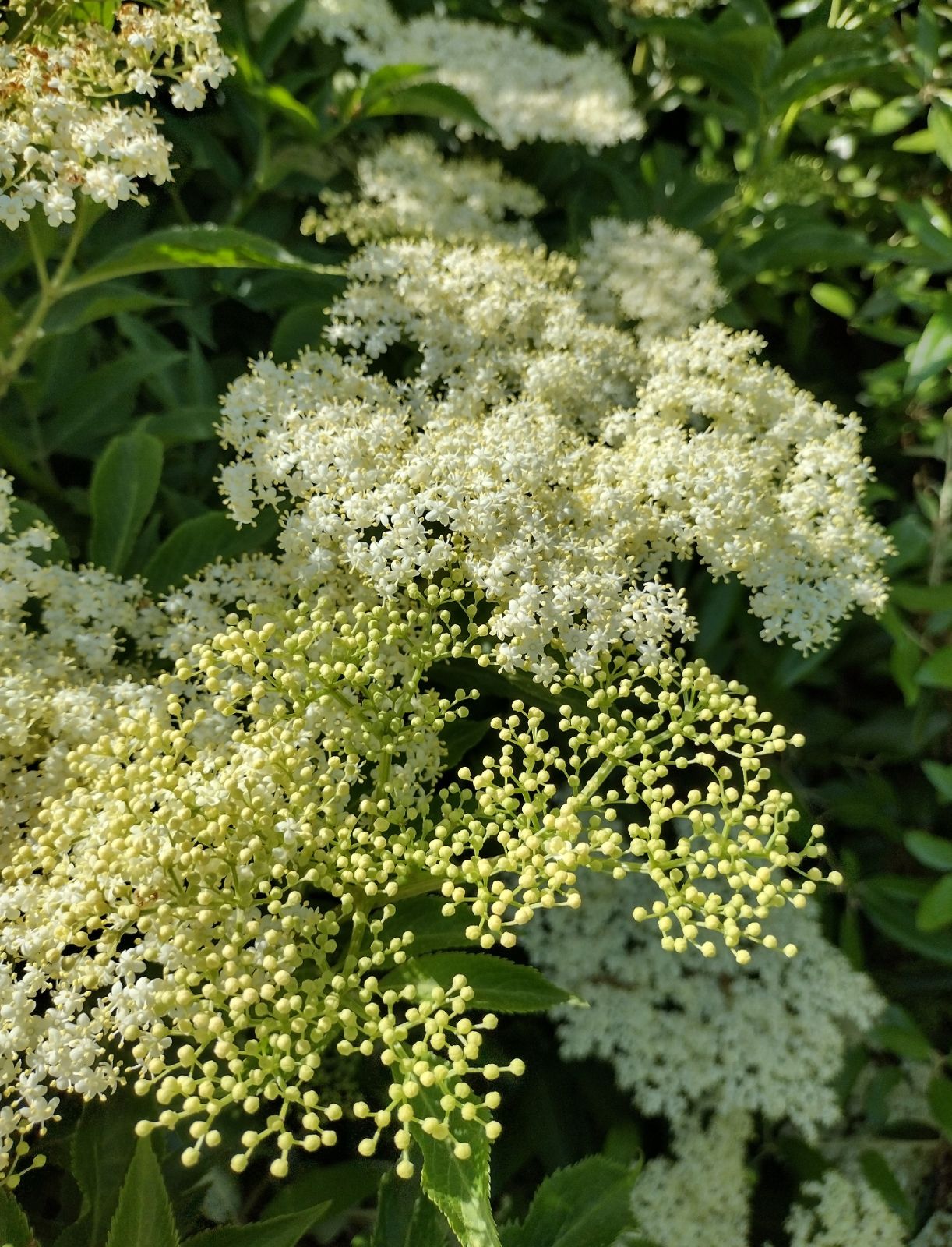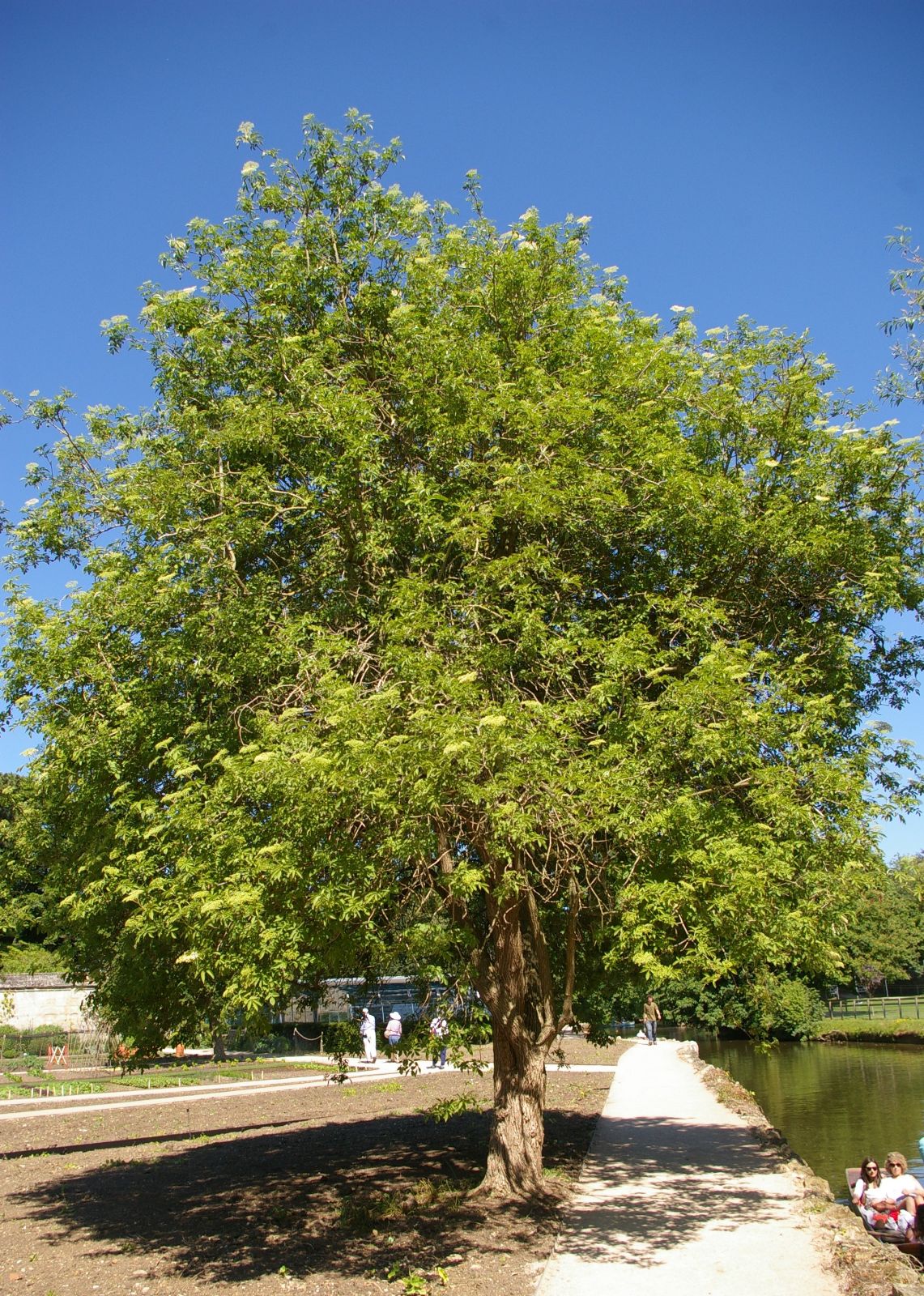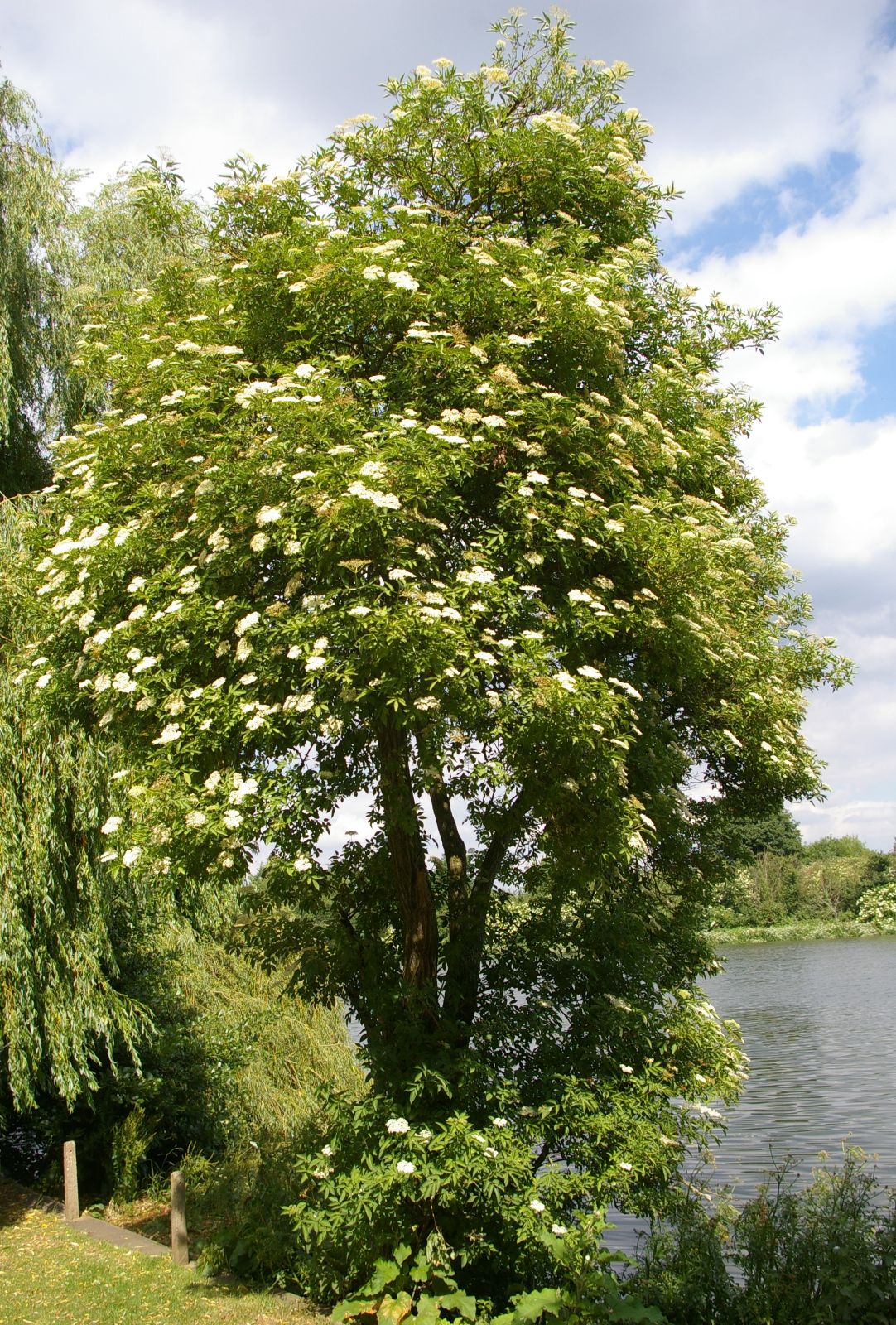Sambucus nigra
Credits
Article from Bean's Trees and Shrubs Hardy in the British Isles
Recommended citation
'Sambucus nigra' from the website Trees and Shrubs Online (treesandshrubsonline.
Genus
Common Names
- Common Elder
A deciduous shrub, 15 to 20 ft high, or a small tree 30 ft or more high; young branches glabrous. Leaves pinnate, 4 to 12 in. long, composed of three, five, or seven (usually five) leaflets, which are ovate, 11⁄2 to 5 in. long, 3⁄4 to 2 in. wide, sharply toothed, glabrous except for a few hairs beneath. Flowers yellowish or dull white, with a heavy odour, produced during June in flat umbels 5 to 8 in. across, each umbel composed of four or five main divisions which are again several times divided. Berries globose, shining black, 1⁄4 in. wide, ripe in September.
Native of Europe, N. Africa and S.W. Asia. One of the best known of native shrubs, and to be regarded more often as a weed in gardens than anything else. Still, the elder, when made to assume the tree form by restricting it to one stem for 6 or 8 ft up, is not without a certain quaintness and charm. Its trunk is rough and crooked, and carries a large rounded head of richly leafy branches, laden with flower in June and with fruit in September. The seeds are spread by birds, and young elder plants spring up everywhere in woods, tall shrubberies, etc. In the neighbourhood of more important plants they must be rigorously pulled up. The species is chiefly represented in gardens by the numerous varieties that have sprung from it, some of which are mentioned below as worth cultivating. The type itself may be left to furnish out-of-the-way damp, dark corners, where little else will live.
No plant holds (or perhaps it is safer to say, used to hold) a more honoured place in domestic pharmacy than the elder. From its berries is prepared, by boiling with sugar, a wine or syrup which, diluted with hot water, is a favourite beverage in rural districts. It is usually taken just before bedtime and is considered a useful remedy for colds, chills, etc.
A large number of varieties have been obtained under cultivation, of which the following only need be mentioned as the most distinct:
'Aurea' Golden Elder
A good yellow-leaved shrub, useful for producing a broad patch of colour. It may be pruned back each spring. In cultivation 1883 and possibly the same as the elder once known as S. n. aurea Dixonii.f. laciniata (L.) Zab.
Common Names
One-leaved Ash
Synonyms
S. nigra var. laciniata L. Parsley-leaved Elder
The handsomest cut-leaved variety of common elder, the leaflets being pinnately divided into linear pointed lobes. Known since the 16th century and occurring occasionally in the wild.
f. viridis Schwer.
Synonyms
S. n. var. viridis West.
S. virescens Desf.
S. n. var. virescens (Desf.) DC.
S. n. var. alba West.
S. n. var. leucocarpa Sm.
S. n. f. alba (West.) Rehd.
S. n. var. chlorocarpa Hayne



